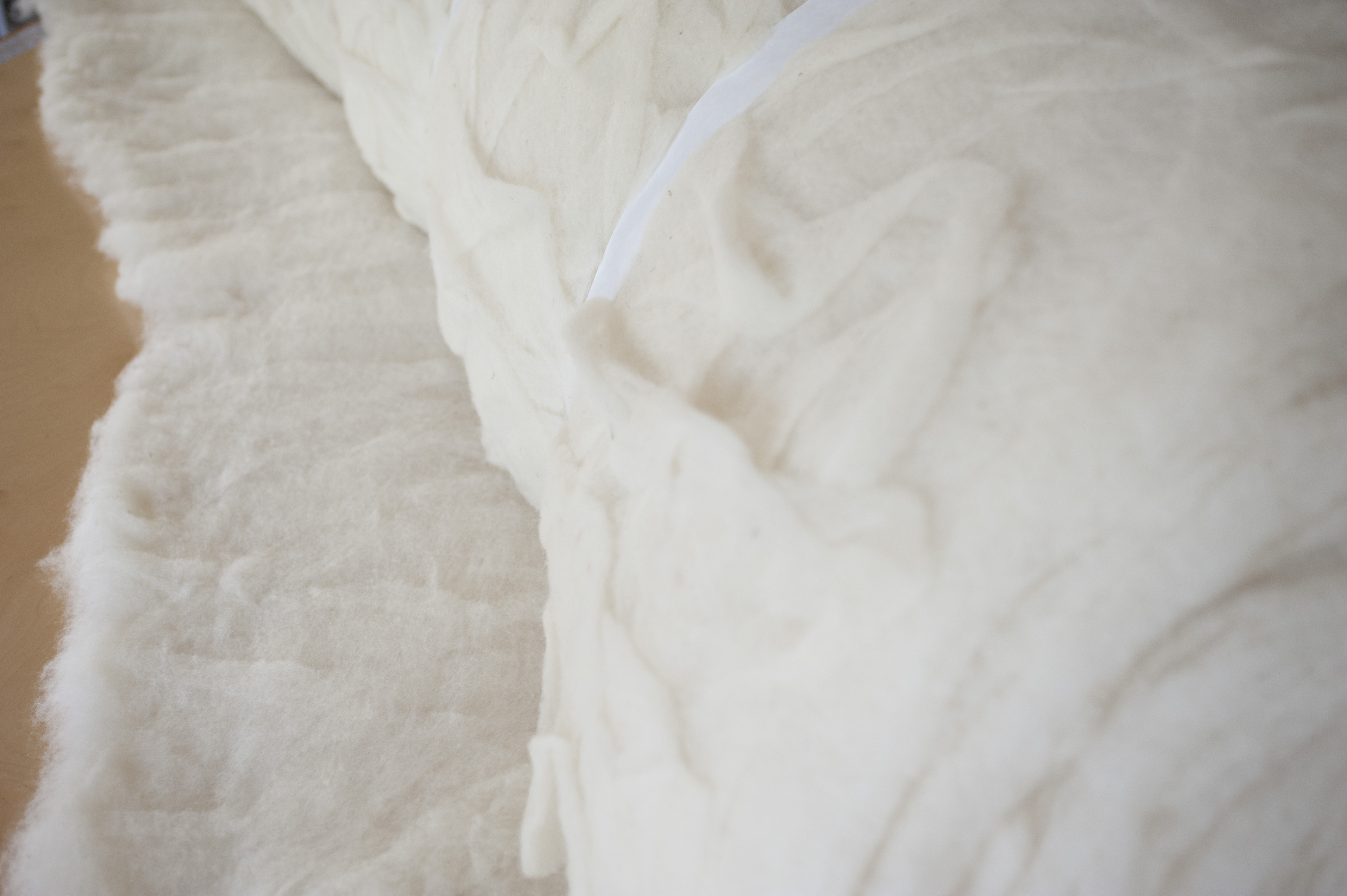How to Avoid Body Compressions
One of the most important considerations in caring for your all-natural wool bedding is compression. Being mindful of compression ensures that your wool-filled bedding withstands many years of use.
At Shepherd’s Dream, all of our bedding is made with wool batting which experiences compression within the first 6 months of regular use. The explanation for this lies in the construction of the fiber.

Batting Construction
Our batting is constructed by The Woolgatherer Carding Mill that combs the raw wool into thin sheets with all of the fibers aligned in one direction. These sheets of wool present the ideal combination of resilience and loft necessary for us to create our wool-filled products.
Wool Compression
First of all, it’s important to remember that while annoying to look at for some, the body indentations that may happen with wool beds are both avoidable but do not actually cause any discomfort. Compression naturally occurs when a new wool-filled product is exposed to pressure and weight. During this time the wool batting settles and releases any pockets of air. Once compressed, wool is incredibly resilient. With proper care your wool bedding should last many decades.
Other companies mechanically compress their wool, but here at Shepherd’s Dream we prefer to stick to the art and spirit of lovingly handcrafting our products.
Some of our wool-filled bedding is mostly pre-compressed by hand during construction (such as our wool mattresses), while others will experience most of the compression in your home (our wool-filled toppers and pillows).
How To Properly Compress Your Wool-Filled Bedding
To ensure an even compression, there are few things to be mindful of within the first 6 months of regular use:
- Distribution: Sleep all over your new wool bedding. Taking naps on different spots of the bed is an excellent way to evenly distribute weight. We have a former employee and mother of current owner Hank who improved upon this method and says her original wool mattress she bought almost 15 years ago still does not have any body compressions. This was due to a strict regimen of sleeping with her husband (Hank Sr.) in different diagonal configurations for one month. After that, they sleep on their side of the bed every night with no dips in sight!
- Rotation: Rotate your bedding from head to toe weekly.
- Inversions: Flip your mattress whenever you change your sheets (we recommend every two weeks, but if you are a hot sleeper or sweat a lot at night, you may need to do this every few days to avoid excess moisture from seeping into the mattress).
Sun & Air
Your new wool bedding will naturally disinfect with some rays of sunshine on it and plenty of air circulation. We recommend that all our wool bedding, including toppers, pillows, and mattress protectors, will benefit from a little nap outside.
Enlist a friend to help if the bedding is too heavy to move by yourself, and place the bedding outside in a dry area where it will receive both sunshine and air. You may see that, after just 15 minutes, the wool will decompress just a bit. Try doing this every 3 months. If an outdoor area is not available, a sunny window with plenty of air circulations is good too.
By following these guidelines you can ensure the longevity of your wool bedding and avoid inconveniences such as body impressions or uneven bedding.

